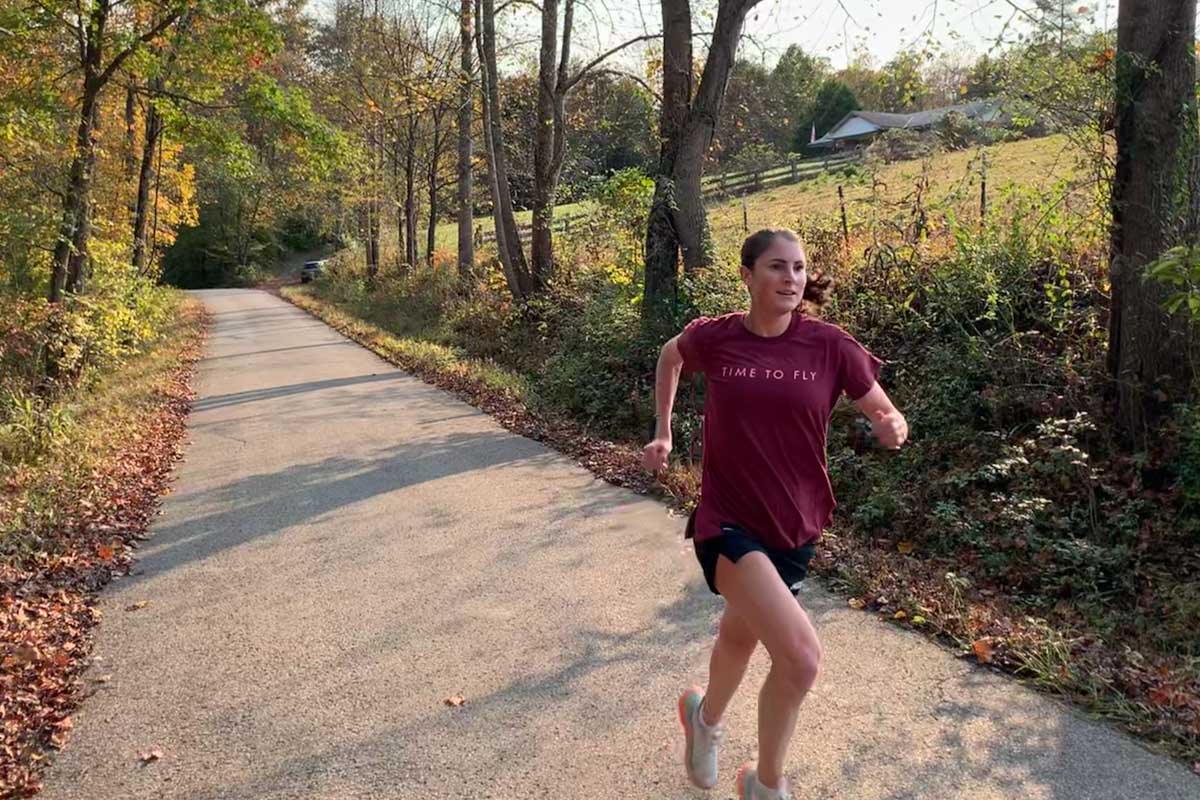There are two things I do immediately before I compete. I cover myself in sunscreen. If I don’t look like a potato salad, then I add more sunscreen. Then I tell someone, usually my husband, what my goals are for the day. I have to state my objectives aloud so that I am accountable to them. Otherwise, when things get hard, I might settle for something less or explain my goals away. I work too hard in training to do that.
For big goals and grand objectives, I first suggest them to myself quietly. They make me feel uneasy, and I convince myself they are too difficult. Over time, I become more comfortable thinking about them, and I start to train in light of their possibility. I measure myself against them, assessing whether they are feasible. I train to become the kind of person capable of achieving them. Then I stand on the starting line and hope to bring them to fruition.
The Concept of Hope
Hope is both a natural passion and a virtue, or excellence of that passion (1). As a passion, hope is “inherently ‘tensed (2).’” Its object is some future good. Aquinas describes this object as an arduous good, or something difficult but possible to obtain (3). An example in running is setting a race goal that is challenging enough to be daunting, yet feasible if we really train for it.
Hope enables us to walk — or run — toward worthy objectives, and it makes us more resistant to despair. It “builds the capacity … to envision a better world and act towards it (4).”
Hope has special relevance for runners. It permits us to choose something hard, set our will on it, and work toward securing it. But hope is a virtue we often get wrong. Here are three reminders about a critically important virtue.
Hope Is Not Optimism
I like racing into shape across a season. I start each spring with solid training behind me, but I am not race-ready. Knowing that I cannot ride the fine edge of fitness for very long, I begin each season like a blunt crayon and sharpen myself into a pencil as the season progresses. By the time my biggest race of the season arrives, I am hopefully at my sharpest.
What this means is that I end every season at peak fitness — strong and well-prepared to compete at my best. Then I start each new season at my fitness nadir — not at all prepared to run well.
Due to imprudence (or maybe greed), I rarely adjust my racing goals to accommodate my lower level of fitness. I set out at paces suitable to the memory of myself — the well-prepared, sharpened-pencil ghost of my past. I try to run her races. I hope that I can hang on, and I never can.
Strictly speaking, this is not hope; it is optimism. And, while we often elide hope with optimism in popular discourse, they are not the same thing. Optimism is unanchored positivity (5). It is not grounded in the reality of the situation. Neither is pessimism. Michael Lamb describes hope as a virtue that “finds a middle way between the vices of presumption and despair (6).”
Presuming too much of your capabilities and attempting to race beyond your means is not excellent. It is not hope, and it will probably have costs for your capacity to perform at a level commensurate with your abilities.

Sabrina Little finishing the Rocky Racoon 100 Mile, running fitness sharp like a pencil. Photo: Sabrina Little.
Hope Is Social
Several years ago, I coached a cross-country team that had a good chance to podium at the state championships. This was a big goal — arduous but feasible given their capabilities.
Throughout the season, my runners all had failed workout days, and doubts surfaced. At times, their big podium goal seemed unattainable. Thankfully, it was rare that everyone had a bad day at once. Some runners had good days while others had bad ones. On bad days, they leaned on one another and kept the hope alive.
When it is difficult to keep progressing toward a big goal, having friends or running buddies along for the journey can play a role in sustaining our hopes.
Hope Is a Virtue
A virtue is an acquired excellence. By acquired, I mean we have to develop it. We are not born excellent in our hopes, consistently aligning ourselves with worthy objectives and working diligently to secure them.
Aristotle writes that “men become builders by building and lyre players by playing the lyre; so too we become just by doing just acts, temperate by doing temperate acts, brave by doing brave acts (7).” We develop virtues, in part, by practicing them. Thankfully, running provides ample opportunity to practice our hopes. Training is a hopeful act.
We can choose goals that are worthwhile and attainable, albeit challenging, and we can make good choices in pursuit of these goals long-term. We can do this every season as we challenge ourselves in new ways.

Hope is a virtue we develop by consistently aligning ourselves with worthy objectives and working diligently to secure them. Photo courtesy of Sabrina Little.
Final Thoughts
There are many other things we should know about hope. Hopes work best in conjunction with other virtues, like perseverance, faith, patience, and resilience. Also, runners become injured often, so it is wise to place our hopes in more substantial things than just our bodies so that we do not feel unmoored when we inevitably get hurt.
Additionally, hope is active, not passive. To desire a difficult goal means we are committed to working toward it, rather than just waiting around.
There are few virtues as important for distance running as hope. Hope matters because running is invariably hard (8).
Call for Comments
- Have you ever confused hope with optimism with your running?
- How does hope play a part in your daily motivations to lace up your shoes and get out the door?
Notes/References
- For more on hope and how to train this virtue in sports, see Sabrina B. Little (2025). Training civic virtues in sports: resilience and hope, Journal of Philosophy of Education, qhaf040.
- Pinches, C. (2014) “On Hope.” In Virtues and Their Vices, edited by K. Timpe & C. Boyd, 349-368. Oxford University Press, p. 351.
- Thomas Aquinas Summa Theologiae, II.2.17.1
- A. Jeffrey & K. Mehari. 2023. The primacy of hope for human flourishing. The Monist. 106: 12-24, 19.
- Sabrina B. Little (2025). Training civic virtues in sports: resilience and hope, Journal of Philosophy of Education, qhaf040.
- M. Lamb. 2022. A Commonwealth of Hope, p. 2; M. Lamb. Be what you hope for. Aeon. 26 June 2023.
- Aristotle. Nicomachean Ethics 1103b
- I hope you read this far.


